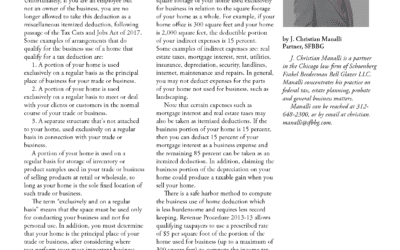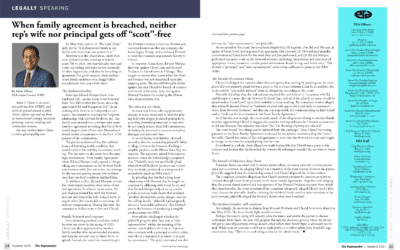Question: I own two separate businesses and am considering adopting a profit sharing and 401(k) plan for my employees. Is my advisor correct that the plan must cover the employees of both companies?
Answer: While the advice you have been given is proper, you can take advantage of some creative design options that will allow you to limit plan coverage. By carefully considering the available options, you can avoid having to cover all of the employees of your two businesses.
Both the Employee Retirement Income Security Act (“ERISA”), the federal statute that governs employee benefit plans, and the Internal Revenue Code, require qualified employee benefit plans such as profit sharing and 401(k) plans to satisfy certain coverage tests to maintain their qualified status. The overall thrust of this legislation is to prohibit discrimination against non-highly compensated employees (“NHCEs”). Discrimination against highly compensated employees (“HCEs”) by excluding them on a class basis is permissible in these statutes.
While the definition is somewhat complex, an HCE is generally an employee who earns more than an indexed threshold amount of annual compensation ($150,000 for the 2023 year) and is in the top twenty percent of employees ranked by pay. A person who owns 5% or more of the plan sponsor at any time during the year is also considered an HCE, regardless of salary. Other rules apply in determining if an employee is an HCE. An NHCE is simply an employee who is not an HCE.
One of the plan coverage tests requires that a qualified employee benefit plan cover at least 70% of the employer’s NHCEs. An alternative test permits an employer to cover that percent of NHCEs which is at least 70% of the percentage of the HCEs who are covered by the plan. Other, more intricate, plan coverage tests apply as well. Given the common ownership of both of your businesses, the coverage test must take into account the employees of both businesses unless some uncommon exceptions apply.
One option is to simply choose which employees are intended to be covered by the plan based on their job classification but to exclude HCEs from the plan. This gives an employer the option to cover less than all of the company workforce while still maintaining the qualified status of the plan. An employer could, for example, cover only the NHCEs of one business and exclude the NHCEs of the other business.
You might also consider the number of NHCEs in the two businesses. If 70% or more of the NHCEs working for the two companies are covered by one of your two businesses, you can adopt a plan just for that business and likely pass the coverage test without including employees of the other business.
The other coverage test noted above allows you to cover that percent of the NHCEs which is at least 70% of the HCEs who are covered by the plan. If you have a workforce of 30 employees, for example, where five are HCEs and are all covered by the plan, since all of the HCEs would be covered, you must cover 70% of the NHCEs. Carrying that concept further, if only two of the five HCEs are eligible to participate in the plan, then the HCE coverage percentage is 40% (2 covered HCEs of 5 total HCEs). In that case, only 28% of the NHCEs would need to be covered (70% of the 40% HCE coverage rate).
In deciding which employees to cover, you are strongly encouraged to do so on a job classification or other reasonable basis so you are not discriminating based on gender, age or any other protected class of employees. Also, you would not want two employees with the same or similarly situated employment responsibilities treated differently for employee benefit plan purposes. Selecting coverage on a job classification such as salespersons or administrative employees is one means of limiting plan participation. You will of course have to address employee relations issues that may arise if one or more groups of employees take umbrage with being excluded from the plan.
Many brokerage and other financial institutions sponsor pre-approved plans that offer minimal plan design and other administrative costs for adopting and administering qualified plans. However, if you wish to vary your plan coverage by not offering participation to all of your employees, a standard plan from a brokerage or other financial institution may not provide you with the flexibility you need to tailor your coverage. With an innovative plan design, you may have greater latitude in creating a plan which satisfies your coverage needs.
The Tax Corner addresses various tax, estate, asset protection, and other business matters. Should you have any questions regarding the subject matter or if you have questions, you want answered, you may contact Bruce at (312) 648-2300 or send an e-mail to [email protected].



